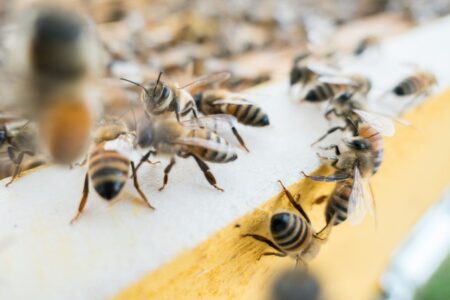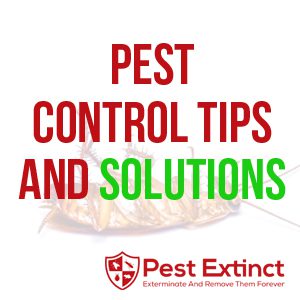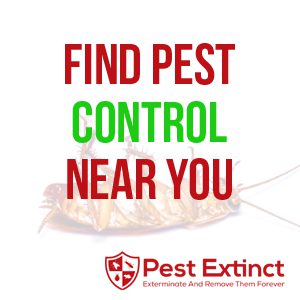
The Buzz on Safe Bee Removal: Essential Tips for Homeowners
Bees play a vital role in our ecosystem, particularly in the pollination of many plants and crops, yet finding a hive near your home can be unsettling and potentially dangerous, especially for those with allergies to bee stings. Understanding how to safely remove bees, while ensuring their survival, is crucial. This blog will guide you through everything you need to know about bee removal, emphasizing methods that protect both the homeowner and the bees.
Understanding the Importance of Bees
Before diving into bee removal, it’s essential to recognize the critical role these insects play. Bees are prolific pollinators, responsible for the successful reproduction of many plants and the continuation of food supplies. Alarmingly, bee populations have been declining due to habitat loss, diseases, pesticide exposure, and climate change. This makes it even more important to approach bee removal with a focus on preservation.
Bees are more than just a nuisance when they buzz around your backyard; they are critical players in the biodiversity of our ecosystem. Understanding the importance of bees goes far beyond appreciating their honey-producing capabilities. Here’s a deeper dive into why bees are vital for the environment, agriculture, and the broader health of our planet.
Pollination Powerhouses
Bees are perhaps best known for their role as pollinators. As they move from flower to flower in search of nectar, they inadvertently transfer pollen grains stuck to their bodies to other flowers, leading to fertilization. This process is crucial for the reproduction of flowering plants, including many of the crops humans rely on for food.
- Food Production: About one-third of the food we consume each day relies on pollination mainly by bees, including fruits, vegetables, seeds, nuts, and oils. Crops like apples, almonds, blueberries, and cucumbers directly depend on bee pollination.
- Biodiversity: Bees help increase plant reproduction and genetic diversity. This not only enhances the beauty of landscapes and natural habitats but also contributes to robust ecosystems that can better withstand pests, diseases, and changing climate conditions.

Economic Impact
The economic contribution of bees to global agriculture cannot be overstated. The Food and Agriculture Organization of the United Nations estimates that, globally, bees and other pollinators affect up to $577 billion worth of annual food production. Without their free labor, the cost of food could rise significantly, impacting economies worldwide and increasing food scarcity challenges.
Environmental Indicators
Bees also serve as important environmental indicators. Their health and behavior can provide scientists with valuable insights into environmental conditions. Changes in bee populations, diversity, or behavior can signal broader ecological shifts, often before other symptoms appear. This makes bees excellent bioindicators for assessing the effects of pesticides, habitat loss, and climate change.
Supporting Wild Ecosystems
While domesticated bees are vital for commercial agriculture, wild bees, including hundreds of solitary bee species, play a significant role in the pollination of wild plants. These plants contribute to the health of ecosystems by providing food and habitat for wildlife, supporting soil stability, and aiding in water cycle regulation.
Bee Decline and Its Implications
Unfortunately, bee populations are facing significant threats from several fronts:
- Pesticide Exposure: Certain pesticides, particularly neonicotinoids, are highly toxic to bees. Their use can weaken bees’ immune systems, making them more susceptible to disease and reducing their lifespan.
- Habitat Loss: Urbanization, intensive farming, and deforestation lead to the loss of habitats for bees, reducing their food sources and nesting sites.
- Climate Change: Changing climate patterns can alter flowering times and the availability of natural forage, disrupting the natural synchronization between bees and plant life.
- Diseases and Parasites: Bees are vulnerable to a variety of diseases and parasites, which can devastate entire colonies. The Varroa mite, in particular, has been linked to massive bee die-offs.



Identifying Bee Infestation Before Removal
Identifying a bee infestation accurately before proceeding with removal is crucial for effective management and ensuring the safety of both the inhabitants and the bees. Understanding where and how bees nest, recognizing signs of infestation, and determining the type of bee are essential steps in this process. This detailed identification not only helps in choosing the appropriate removal method but also in preserving the ecological role bees play.
Recognizing Bee Habitats
Bees can establish their nests in various locations, depending on the species. Here’s how to spot common nesting sites:
- Honeybees often nest in hollow trees, walls, roofs, or attics. They can create impressive hives containing thousands of individuals.
- Carpenter bees prefer to burrow into wood to lay their eggs. You might find small, round holes in wooden structures like fence posts, decks, or eaves.
- Bumblebees typically build their nests close to the ground under piles of wood, compost heaps, or in abandoned rodent burrows. They can also be found in thick grass clumps or under sheds.
Signs of a Bee Infestation
Observing the following signs can help homeowners identify a bee infestation:
- High Bee Activity: Regular sighting of bees around a specific area, especially if they seem to be entering and exiting a particular spot.
- Buzzing Sounds: A quiet but noticeable humming or buzzing sound coming from a wall, roof, or other enclosed area could indicate a hive inside.
- Visible Structures: For honeybees, the presence of a wax honeycomb is a definitive sign of a hive. Carpenter bees leave behind sawdust and have visible entrance holes.
- Swarming: In the case of honeybees, seeing a swarm around your property, typically during spring, can indicate that a colony is forming or looking for a new nesting site.
Identifying the Type of Bee
Proper identification of the bee species is critical, as different bees require different management strategies:
- Honeybees are small and vary in color from golden brown to almost black. They are generally non-aggressive unless threatened.
- Carpenter bees are larger, resembling bumblebees but with a shiny, bare abdomen and black coloration. Males cannot sting, but females will if provoked.
- Bumblebees are large, fuzzy insects, usually with noticeable bands of yellow and black. They are generally docile but can sting defensively.



What to Do Upon Identification
Once you have identified a bee infestation and determined the type of bee, consider the following steps:
- Do Not Disturb: Avoid disturbing the bees or the nest. Agitating bees can provoke them to become aggressive.
- Contact Professionals: Reach out to a professional beekeeper or pest control expert who specializes in bees. They can assess whether the bees can be safely removed and relocated.
- Inform Neighbors: If the bees are in a residential area, inform your neighbors about the infestation and the planned removal, especially if anyone nearby is allergic to bee stings.
Proper identification and understanding of a bee infestation are vital in dealing with it responsibly and safely. Homeowners should be cautious, informed, and proactive in engaging professionals to address bee-related issues, ensuring the preservation of these essential pollinators while safeguarding human health and property.
Safe Bee Removal Tips for Homeowners
When it comes to safe bee removal, homeowners should approach the situation with caution and respect for both the bees and their own safety. The process requires careful planning, the right approach, and, often, professional help. Here’s a detailed guide on how to handle bee removal safely and effectively.
Assess the Situation
The first step in safe bee removal is to thoroughly assess the situation without disturbing the bees. Determine the location and size of the nest and observe the bees’ behavior. This information is crucial for understanding the complexity of the removal process and whether professional help is needed.
Consider the Timing
Timing can significantly impact the success and safety of bee removal. Early morning or late evening, when bees are less active, is the ideal time to approach the nest. Cooler temperatures make bees less likely to fly, reducing the chances of stings during the removal process.
Use Appropriate Clothing
Wearing the right protective clothing is essential to prevent stings. Homeowners should wear:
- A long-sleeved shirt and pants made from thick material to prevent stings.
- Gloves, preferably leather, to protect the hands.
- A hat and veil to protect the face and neck, which are particularly sensitive areas.
Contact Professionals
For most homeowners, the safest way to remove bees is to contact a professional. Beekeepers and pest control experts who specialize in bee removal have the skills and equipment to remove bees effectively and safely. They can also relocate the bees, which is crucial for preserving these beneficial pollinators.



If Professional Help Is Not Immediately Available
If you must wait for professional help to arrive, take some measures to minimize risk:
- Secure the area around the nest to prevent accidental disturbances.
- Inform everyone in the household, especially children, to stay away from the area.
- Monitor the bees’ activity from a safe distance to detect any changes in their behavior.
After Removal: Preventing Future Infestations
Once the bees have been safely removed, take steps to prevent future infestations. This includes:
- Sealing all potential entry points where bees might enter to establish a new nest. Common areas include cracks in the walls, openings around windows and door frames, and uncapped chimneys.
- Removing all residues of the previous nest to avoid attracting new bees.
- Consulting with a professional to identify and mitigate any conditions in your yard that might attract bees, such as certain types of flowers or structures.
Importance of Humane and Ecological Removal
Whenever possible, opt for methods that allow for the humane removal and relocation of bees. Bees play a critical role in pollinating plants and crops, and their global decline has serious implications for ecosystems and agriculture. By choosing humane removal methods, homeowners contribute to conservation efforts and help maintain the health of local bee populations.
Educate and Spread Awareness
After experiencing a bee infestation, sharing your knowledge and experience can be invaluable. Educate your neighbors and local community about the importance of bees and how to deal with infestations responsibly. Promoting awareness can lead to community-wide support for bee conservation and more informed decisions regarding bee removal.
Safe bee removal is about more than just eliminating a nuisance; it’s about doing so in a way that respects nature’s balance and ensures safety for everyone involved. By assessing the situation carefully, using appropriate protective measures, and relying on professional help, homeowners can manage bee infestations effectively. Remember, preserving bee populations not only supports biodiversity but is also essential for sustaining food production and natural habitats.



The Process of Professional Bee Removal
The process of professional bee removal is a carefully coordinated endeavor designed to safely relocate bees without harming them and to minimize risk to humans and property. Understanding how professionals handle bee removal can provide homeowners peace of mind and insights into the benefits of choosing expert services over DIY methods. Here’s an in-depth look at the typical steps involved in professional bee removal:
Initial Assessment
The first step in professional bee removal is a thorough assessment of the situation. This involves a site visit by a beekeeper or pest control expert to determine:
- The type of bees involved (such as honeybees, carpenter bees, or bumblebees).
- The location and accessibility of the nest.
- The size of the colony and the extent of the infestation.
This initial assessment helps the professional decide the best approach for removal and relocation, ensuring that it is done safely and effectively.
Planning the Removal
Once the assessment is complete, the professional will devise a strategy that considers the safety of the bees and the people living in the home. This plan includes:
- Choosing the right time for removal, often during early morning or late evening when bees are less active.
- Preparing the necessary equipment, such as bee suits, smokers, and tools for carefully opening and closing structures where bees are located.



Execution of Removal
The actual process of bee removal varies depending on the type of bee and the location of the nest but generally follows these steps:
- Using Smoke: For honeybees, professionals often use smoke to calm the bees. Smoke masks alarm pheromones released by guard bees and makes them less aggressive, making the removal process smoother and safer.
- Carefully Exposing the Hive: The professional will carefully open up the part of the structure where the bees are nesting. This could involve removing part of a wall, roof, or other areas of a building.
- Collecting the Bees: The bees are then gently brushed or vacuumed into special containers designed for safe transport. If it’s a honeybee hive, the honeycombs containing brood (young bees) and food reserves are also carefully removed.
- Repair and Seal: After the bees and the hive are removed, the professional repairs any structural damage caused during the removal process. They will also seal up entry points to prevent future infestations.
Relocation
After removal, the bees are relocated to an apiary or a natural habitat where they can thrive without posing a risk to people. This step is crucial for conservation efforts, as it helps maintain local bee populations and supports biodiversity.
Educating Yourself and Your Community
Education is key to changing the way communities handle bee infestations. Share the importance of bees with your neighbors and advocate for professional removal services that focus on preservation. By raising awareness, you can help shift the local approach to bee conservation and ensure that these essential pollinators are protected.
Safe bee removal is not just about protecting your home but also about preserving an essential part of our ecosystem. By understanding the role of bees, identifying infestations correctly, and engaging professionals for safe removal, homeowners can contribute to the conservation of bees while keeping their living spaces safe. Remember, every bee saved is a small victory for environmental conservation.

Leave a Reply